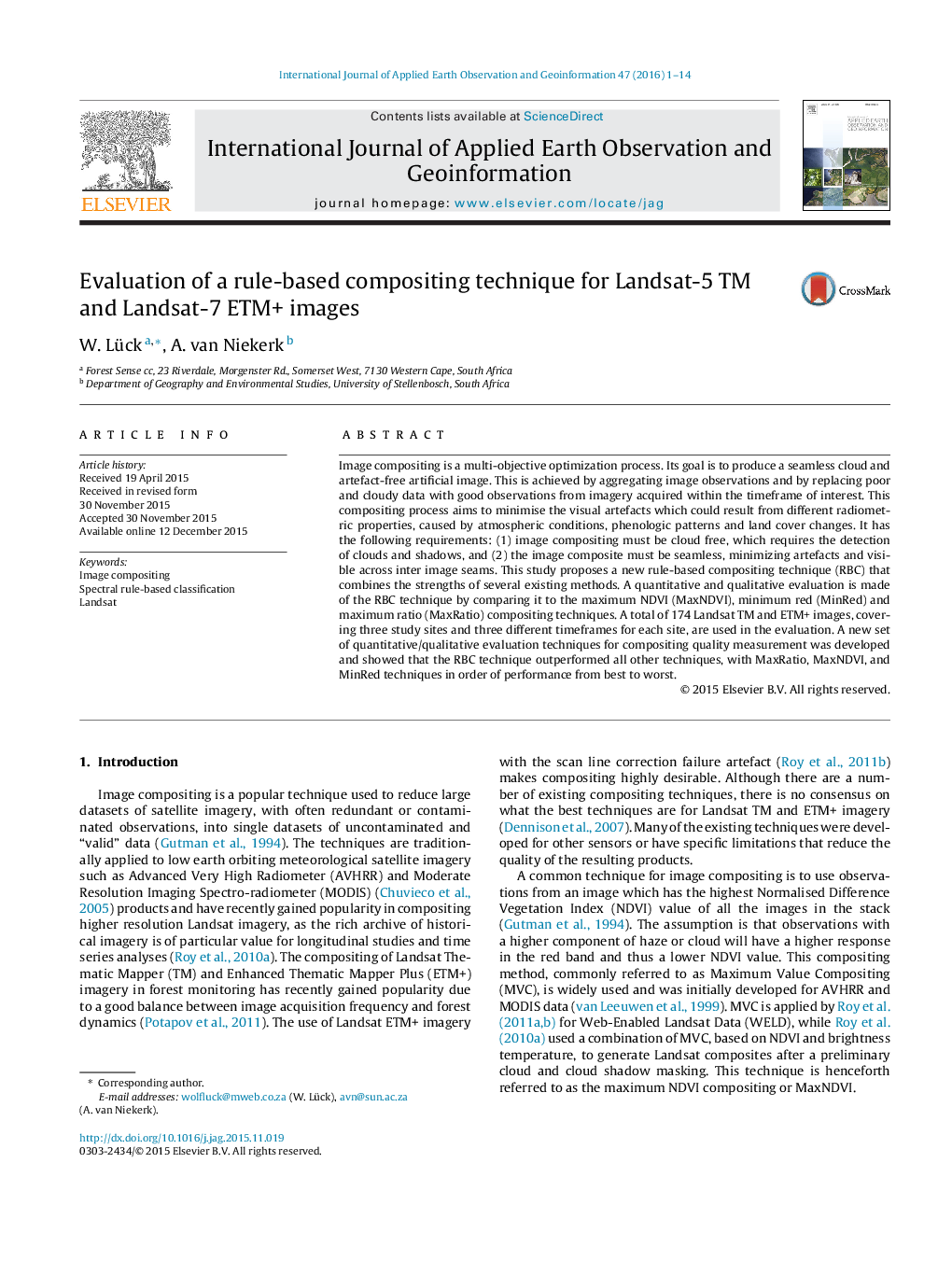| کد مقاله | کد نشریه | سال انتشار | مقاله انگلیسی | نسخه تمام متن |
|---|---|---|---|---|
| 4464634 | 1621810 | 2016 | 14 صفحه PDF | دانلود رایگان |
• Image compositing with topographically normalised data.
• Rule based compositing outperforms maximum ratio, maximum NDVI and minimum red compositing.
• New quantitative method for image compositing evaluation using TC1 and TC3.
Image compositing is a multi-objective optimization process. Its goal is to produce a seamless cloud and artefact-free artificial image. This is achieved by aggregating image observations and by replacing poor and cloudy data with good observations from imagery acquired within the timeframe of interest. This compositing process aims to minimise the visual artefacts which could result from different radiometric properties, caused by atmospheric conditions, phenologic patterns and land cover changes. It has the following requirements: (1) image compositing must be cloud free, which requires the detection of clouds and shadows, and (2) the image composite must be seamless, minimizing artefacts and visible across inter image seams. This study proposes a new rule-based compositing technique (RBC) that combines the strengths of several existing methods. A quantitative and qualitative evaluation is made of the RBC technique by comparing it to the maximum NDVI (MaxNDVI), minimum red (MinRed) and maximum ratio (MaxRatio) compositing techniques. A total of 174 Landsat TM and ETM+ images, covering three study sites and three different timeframes for each site, are used in the evaluation. A new set of quantitative/qualitative evaluation techniques for compositing quality measurement was developed and showed that the RBC technique outperformed all other techniques, with MaxRatio, MaxNDVI, and MinRed techniques in order of performance from best to worst.
Figure optionsDownload high-quality image (132 K)Download as PowerPoint slide
Journal: International Journal of Applied Earth Observation and Geoinformation - Volume 47, May 2016, Pages 1–14
